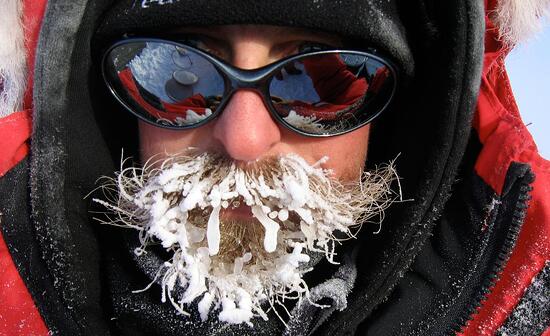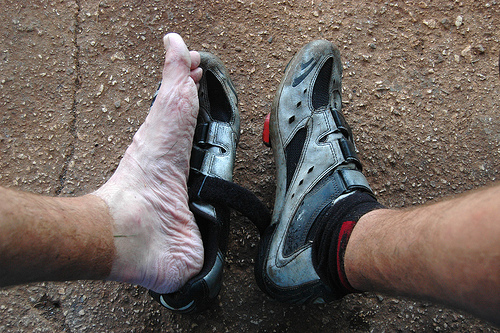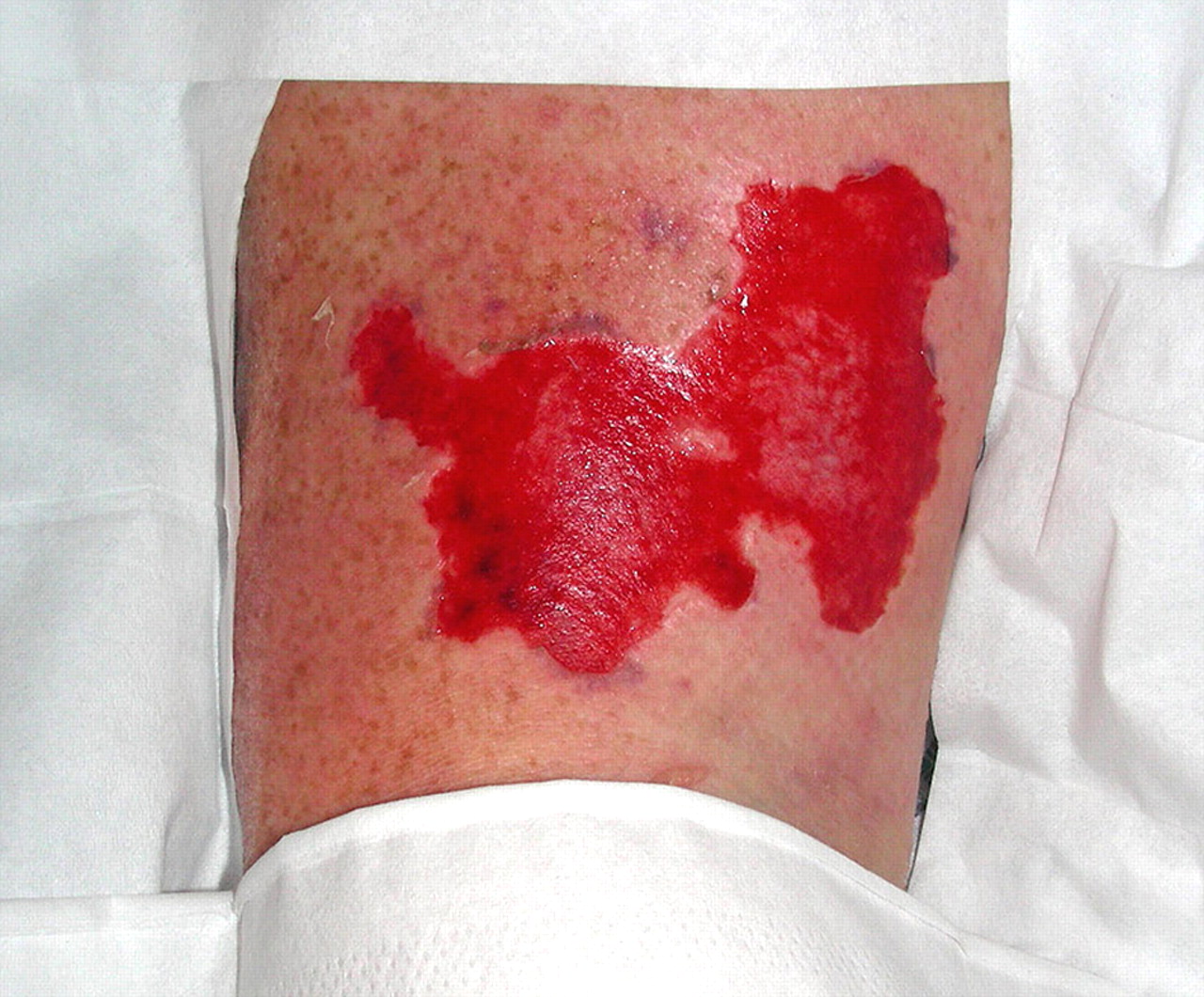
When you think of cold stress, no doubt hypothermia comes to mind automatically, but there are several other types. There are four cold-stress conditions common to the workplace. Knowing their symptoms and what to do in case they happen to you or someone near you can keep everyone safe from these easily preventable illnesses. These cold-induced illnesses are hypothermia, cold-water immersion (also called immersion hypothermia), frostbite, and trench foot.
Hypothermia
When exposed to cold temperatures, the body begins to lose heat faster than it can be produced. Prolonged exposure to cold will eventually use up the body's stored energy resulting in hypothermia or abnormally low body temperature. A body temperature that is too low affects the brain, making the victim unable to think clearly or move well. Hypothermia is particularly dangerous because a person may not know it is happening and will not be able to do anything about it. Symptoms vary depending on the length of cold exposure.
Early symptoms:
- Shivering.
- Fatigue
- Loss of coordination
- Confusion and disorientation
Late Symptoms:
- No shivering
- Blue skin
- Dilated pupils.
- Slow pulse and breathing
- Loss of consciousness
What to do:
- Call for medical assistance
- Move the person to a warm room or shelter
- Remove wet clothing
- Warm the center of the body first (chest, neck, head, and groin) using an electric blanket if available, or skin to skin contact under loose, dry layers of blankets, towels, or sheets
- Warm beverages may help increase body temperature, but do not give alcohol, and do not try to make an unconscious person drink
- After the temperature increases, keep the person dry and wrapped in a warm blanket, including head and neck
- If the person has no pulse, begin CPR
Cold-Water Immersion Coldwater immersion creates a specific condition called immersion hypothermia. It develops more quickly than standard hypothermia because water conducts heat away from the body 25 times faster than air. Typically, people in temperate climates don’t consider themselves at risk from hypothermia in the water, but hypothermia can occur in any water temperature below 70°F. Survival times can be lengthened by wearing proper clothing (wool and synthetics and not cotton), using a personal flotation device (PFD, life vest, immersion suit, dry suit), and having a means of both signaling rescuers (strobe lights, personal locator beacon, whistles, flares, waterproof radio) and having a means of being retrieved from the water. The symptoms and first aid are largely the same as those for hypothermia.
Coldwater immersion creates a specific condition called immersion hypothermia. It develops more quickly than standard hypothermia because water conducts heat away from the body 25 times faster than air. Typically, people in temperate climates don’t consider themselves at risk from hypothermia in the water, but hypothermia can occur in any water temperature below 70°F. Survival times can be lengthened by wearing proper clothing (wool and synthetics and not cotton), using a personal flotation device (PFD, life vest, immersion suit, dry suit), and having a means of both signaling rescuers (strobe lights, personal locator beacon, whistles, flares, waterproof radio) and having a means of being retrieved from the water. The symptoms and first aid are largely the same as those for hypothermia.
Frostbite
Frostbite is an injury to the body caused by freezing. Frostbite causes a loss of feeling and color in the affected areas. It most often affects the nose, ears, cheeks, chin, fingers, or toes. Frostbite can permanently damage body tissues, and severe cases can lead to amputation. In extremely cold temperatures, the risk of frostbite is increased in people with reduced blood circulation and among people who are not dressed properly.
Symptoms:
- Reduced blood flow to hands and feet (fingers and toes may freeze)
- Numbness
- Tingling or stinging
- Aching
- Bluish or pale, waxy skin
What to do:
- Call for medical help
- Get into a warm room as soon as possible
- Unless necessary, do not walk on frostbitten feet; this will increase the damage
- Immerse the area in warm (and only warm) water
- Warm frostbitten areas with body heat (fingers in armpits, etc.)
- Do not rub or massage frozen areas. This will do more damage
- Do not use heating pads, heat lamps, or stoves, fireplaces, or radiators for warming. Frostbitten areas are numb and easily burned
Trench Foot Trench foot, also called immersion foot, is an injury of the feet resulting from prolonged exposure to wet and cold conditions. Trench foot can occur at temperatures as high as 60°F if the feet are constantly wet. The injury occurs because wet feet lose heat 25-times faster than dry feet. Therefore, to prevent heat loss, the body constricts blood vessels to shut down circulation in the feet. Skin tissue begins to die because of a lack of oxygen and nutrients and due to the buildup of toxic products.
Trench foot, also called immersion foot, is an injury of the feet resulting from prolonged exposure to wet and cold conditions. Trench foot can occur at temperatures as high as 60°F if the feet are constantly wet. The injury occurs because wet feet lose heat 25-times faster than dry feet. Therefore, to prevent heat loss, the body constricts blood vessels to shut down circulation in the feet. Skin tissue begins to die because of a lack of oxygen and nutrients and due to the buildup of toxic products.
Symptoms:
- Reddening of the skin
- Numbness
- Leg cramps
- Swelling
- Tingling pain
- Blisters or ulcers
- Bleeding under the skin
- Gangrene (the foot may turn dark purple, blue, or gray)
What to do:
- Call for medical help
- Remove shoes/boots and wet socks
- Dry the feet
- Avoid walking on feet, as it may cause tissue damage
 Many problems come from cold stress, and you must always be on the lookout for them. Not only that, but these conditions are insidious as well, fogging the mind and making it almost impossible for the victim to get to safety. You must look out for others who are suffering and do not know it, because they could die without proper care. Use a buddy system to watch over each other. Keep everyone safe, and everyone will keep you safe from these dangers.
Many problems come from cold stress, and you must always be on the lookout for them. Not only that, but these conditions are insidious as well, fogging the mind and making it almost impossible for the victim to get to safety. You must look out for others who are suffering and do not know it, because they could die without proper care. Use a buddy system to watch over each other. Keep everyone safe, and everyone will keep you safe from these dangers.
Also, don't miss out on our FREE training videos covering a variety of OSHA-related safety topics. Check out our video library here.

.png?width=220&name=Do%20You%20Pocatello%20Podcast_%20(1).png)
